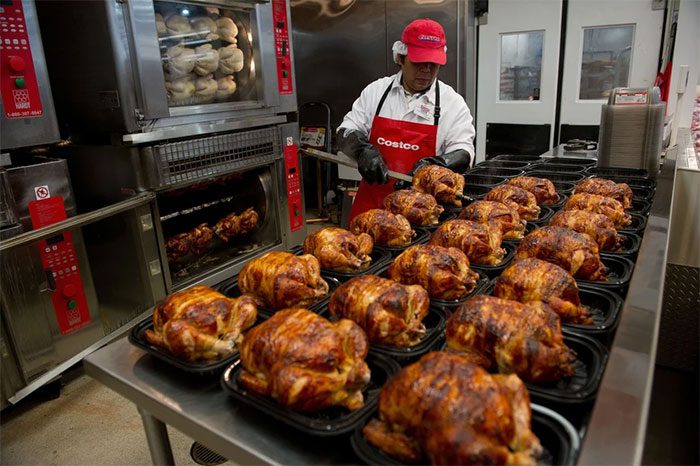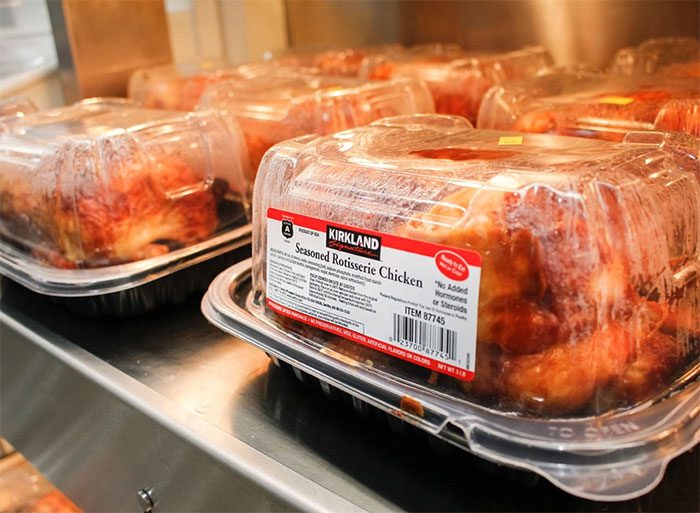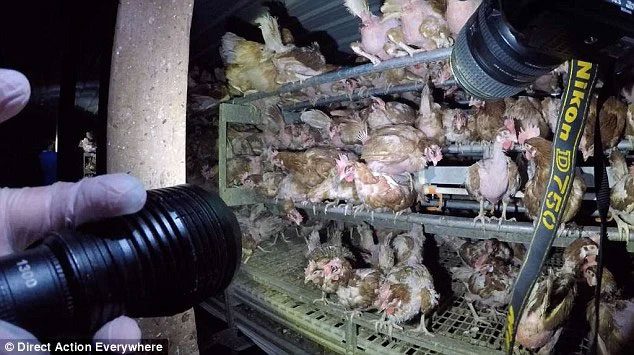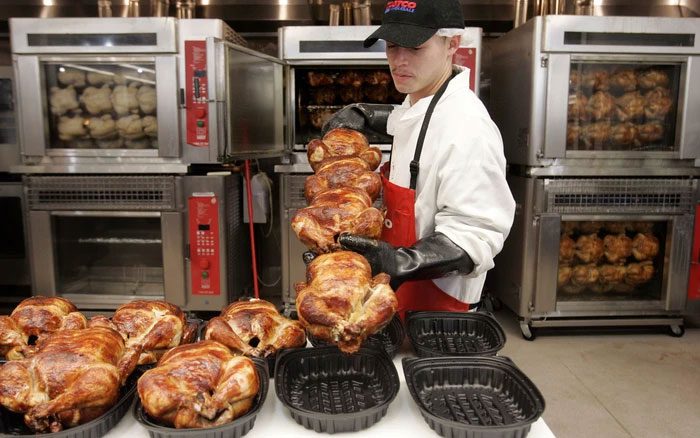The whole roasted chicken at Costco in the U.S. brings joy to everyone… unless you’re a chicken.
Translated from the article “The Ugly Secrets Behind the Costco Chicken” (2021) published in the New York Times by Pulitzer Prize-winning journalist Nicholas Kristof.
Like many of you, I think of Costco as a company that embodies the shining example of effective capitalism. A ranking has placed it as the number one company to work for regarding wages and benefits—an exemplary model of a business that is both profitable and humane.
Unless you are a chicken
The rotisserie chickens sold for just $4.99 each are a hallmark of Costco, delicious and affordable. They are so famous that they have their own Facebook page, and the company sells nearly 100 million chickens each year. However, an animal rights group called Mercy for Animals recently sent a secret investigator to work at a farm in Nebraska that produces millions of these chickens for Costco, and customers might lose their appetite upon seeing the inside of the chicken coops.

Whole roasted chicken at Costco sold for less than $5 each
“It’s dark, everywhere is filled with chicken droppings,” the investigator, who also secretly recorded video there, stated. “It’s like a cloud of hot, humid ammonia mixed with feces.”
You might be thinking: Huh? People are dying in a pandemic. President Donald Trump is facing impeachment in the Senate. And we are talking about… chicken droppings?
Nevertheless, we must protect our moral compass. I believe that one day, future generations will look back at our treatment of livestock and poultry with pain and confusion. They will wonder how we, in the early 21st century, could remain oblivious to the cruelty that produces $4.99 chickens for a Costco rotisserie.
Abusing a chicken in your backyard could get you arrested. Abusing tens of millions? Well, that’s just agriculture.
Don’t assume that Costco chickens suffer more than those from Walmart or Safeway. They are all part of the same agri-business system, which harms animal welfare, that has become extremely efficient in producing cheap protein.
When Herbert Hoover (the U.S. President during the Great Depression) spoke about giving “a chicken in every pot,” chicken meat was a luxury: In 1930, whole chickens were sold at retail in the United States for $7 per half-pound in today’s dollars. In contrast, a Costco chicken now sells for less than $2 per half-pound.

Scientists have created what is sometimes called “exploding chicken” that can gain weight rapidly.
These commendable savings are partly achieved by breeding chickens that can endure suffering. Scientists have created what is sometimes referred to as “exploding chickens” that can gain weight at an astonishing rate, about six times faster than chickens did in 1925. The Poultry Science Journal once calculated that if humans grew at the same rate as these chickens, a two-month-old baby would weigh 300 kg.
These chickens develop enormous breast muscles, as that is the part of the meat consumers desire, so their legs sometimes splay out or collapse (under the weight). Some fall over and cannot get up. Others spend so much time filling their stomachs that they sometimes develop a rash known as ammonia burns; this is a poultry version of pressure sores.
Leah Garcés, president of Mercy for Animals, stated: “They are living in their own excrement, with no fresh air and no natural light. I don’t think that’s what Costco customers expect.”
Garcés wants Costco to adopt the “Better Chicken Commitment,” an industry pledge aimed at slightly better standards for agri-business. For example, each adult chicken would have at least 0.1 square meters of space, would have some natural light, and the company would avoid breeds that gain weight to the point where their legs cannot support them.
Burger King, Popeyes, Chipotle, Denny’s, and around 200 other food companies have accepted the Better Chicken Commitment, but grocery chains in general have not, with the exception of Whole Foods.
I reached out to Costco for comment. John Sullivan, the company’s chief adviser, viewed the Mercy for Animals video and said that much of the footage merely depicts “normal operations and no incidents” but “no system is perfect when you are raising 18 million broiler chickens at any given time.” He stated that the company is working to adjust the genetics of Costco chickens to develop a “more balanced structure,” but this takes time.
In some respects, Costco has demonstrated true leadership. The most barbaric aspect of the poultry industry is the traditional slaughter process, which can result in a bird being scalded alive. To its credit, Costco has adopted a far more humane approach known as controlled atmosphere stunning, so that the chickens are unconscious before being shackled onto a conveyor belt leading to their death.

Inside a chicken farming facility in California, which supplies Costco.
Sullivan argues that the company focuses on animal welfare at every step of production, even stating that trucks transporting live chickens are arranged “to provide optimal comfort for the poultry.”
Listening to Costco’s advertising, you might feel that Costco chickens are enjoying a middle-class poultry life until the moment they appear on the rotisserie. When the chickens fall over and cannot get up, when their undersides are sometimes burned by ammonia, don’t believe it.
However, what impresses me is that Costco fully accepts that animal welfare must be a significant factor to consider. We may not agree on whether current standards are adequate, but moral progress regarding animal rights is unmistakable.
When I began writing about these issues, I never anticipated that McDonald’s would commit to providing cage-free eggs, that California would pass laws protecting mother pigs, or that there would be legal battles over whether an elephant has legal “personhood.”
I do not pretend that there are quick fixes. My family raised a flock of chickens on our farm when I was young, and we did not achieve either productivity or humanity. Many died, and being eaten by coyotes was not a pleasant experience. There is no need to romanticize traditional farming methods; we must simply acknowledge realistically the suffering of animals and the trade-offs to reduce it.
Animal abuse still exists largely because it is hidden—even as the number of chickens slaughtered in the United States reaches a rate of 1 million per hour, day and night. We treat poultry particularly poorly because humans have less empathy for birds than for mammals. We can empathize with a calf with big eyes, but we empathize less with those we consider “birdbrains.”

Animal welfare must be a significant factor to consider. (Illustrative image).
However, the question remains as the English philosopher Jeremy Bentham posed in 1789: “The question is not ‘Can they reason?’ nor ‘Can they talk?’ but ‘Can they suffer?'”
Many of us are unsure about the rights animals should have or how concerned we should be about animal welfare. We are learning, but most are willing to pay a little more to avoid animal suffering, which is why fast-food restaurants are making the Better Chicken Commitment; that is why Costco will ultimately have to comply.




















































